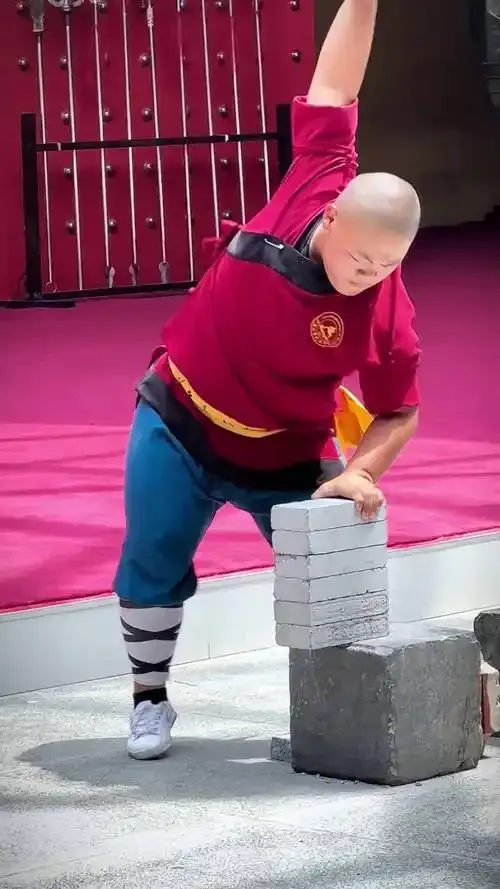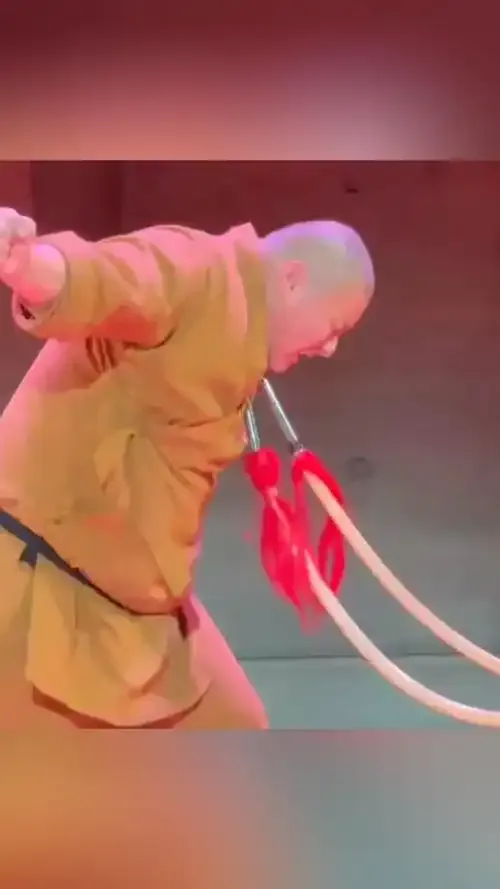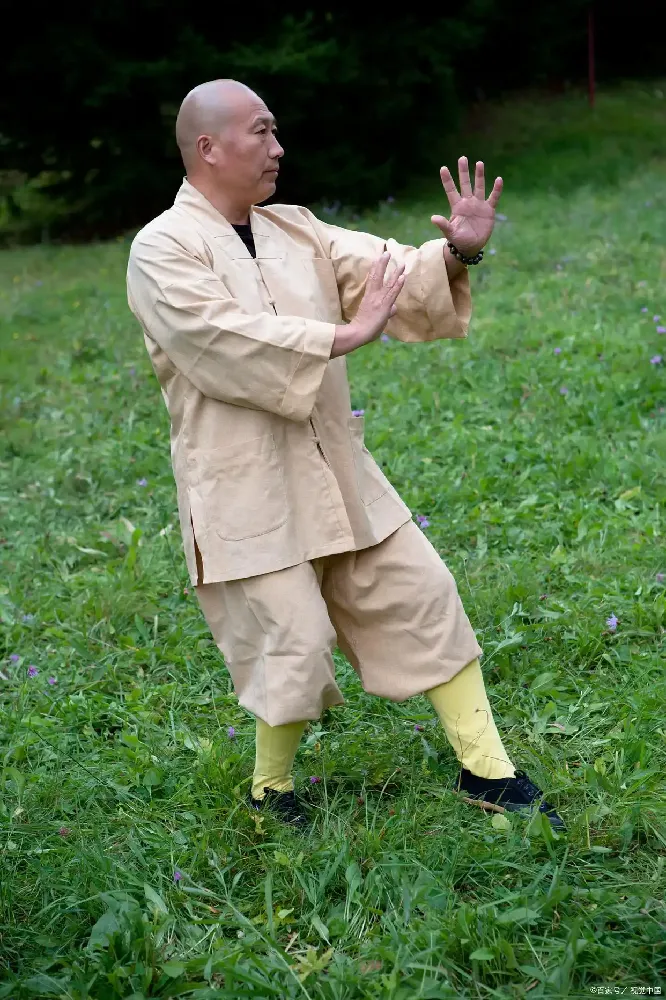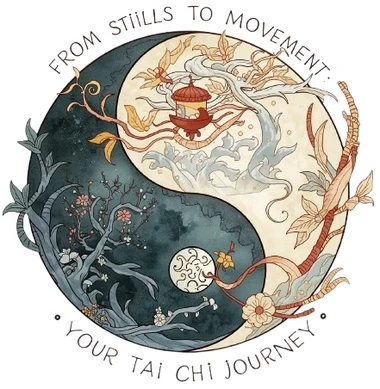Hard Qigong: The Truth About This "Superhuman" Chinese Art
You've seen the videos. A man lies on a bed of nails while a cinderblock is smashed on his chest. Another takes a sledgehammer to the gut without flinching. Is it real? Or just a clever trick?
Let's cut through the mystery right now.
Hard Qigong is a real Chinese discipline that uses controlled breathing, mental focus, and progressive body conditioning to withstand extreme force. It’s not magic, but a trained physiological response.
While it has表演 (biǎoyǎn, performance) elements, its core is a serious practice for building resilience, power, and profound body awareness. This article strips away the hype and shows you exactly how it works, its real-world benefits, and why this ancient art is still relevant today.
Astonishing, but True: Lab tests show human skin has a tensile strength of only about 20MPa. A sharp blade can easily exert over 50MPa. So how do practitioners not get cut? The secret isn't an "iron skin" forcefield—it's a combination of using dull blades, precise angles, and a highly conditioned body that can disperse the impact. The real power lies in the training, not in defying physics.

What Exactly is Hard Qigong? (And What It's Not)
Think of your body's potential like a car. Most of us are driving in first gear. Hard Qigong is the manual that teaches you to use the entire gearbox.
At its heart, Hard Qigong (硬气功, Yìng Qìgōng) is the marriage of two ideas:
- Qigong (气功): The art of cultivating and managing your body's vital energy, or "Qi," through breath and intention.
- Hard Training (硬功): The physical conditioning that toughens the body from the outside in.
It’s the “hard” counterpart to the “soft,” flowing movements of Tai Chi. While Tai Chi emphasizes relaxation and yielding, Hard Qigong teaches you how to become structurally solid and explosively powerful.
But let's be clear about one thing: The dramatic brick-breaking and spear-to-the-throat acts are often skillful performances that use specific tools and techniques. The real, practical value of this training is what happens inside the body and how it translates to functional strength and resilience.
How Can Your Body Possibly Become "Iron Tough"? The Science Explained
You might be thinking, "This sounds like pseudoscience." I get it. I was skeptical, too. Until you understand the actual, measurable changes that happen in the body.
Hard Qigong doesn't turn your bones into literal steel. Instead, it uses progressive overload—a concept any gym-goer will recognize—to force your body to adapt and become more durable.
The Three Pillars of Physical Transformation
The "superhuman" abilities stem from three key physiological adaptations:
- Bone Density & Restructuring: When you repeatedly (and safely) strike objects or receive impact, your bones experience micro-stresses. Your body responds by increasing bone mineral density and rearranging the bone's internal structure to better handle the load. It's your body's natural engineering at work.
- Muscle Armor: Through conditioning, your muscles learn to tense reflexively and at a much higher percentage of their total capacity upon impact. This creates a living, reactive armor that absorbs and disperses force away from your vital organs.
- Neurological Rewiring: This is the secret sauce. The practice trains your brain and nervous system to instantly coordinate the body's response to impact. It’s not just about having strong tissues; it's about being able to use them effectively in a split second.
Breath is Your Built-in Power Generator
If the body is the hardware, the breath is the software. Hard Qigong breathing is nothing like your everyday inhale and exhale.
- It's conscious. You are actively directing the breath.
- It's forceful. It often involves sharp exhales or breath-holding.
- It's strategic. Different breaths serve different purposes.
The most common method is Reverse Abdominal Breathing (逆腹式呼吸, Nì Fùshì Hūxī).
- Inhale: You pull your abdomen in while expanding your chest.
- Exhale: You push your abdomen out.
Why do this? This technique massively increases intra-abdominal pressure, creating a stable, pressurized core. It’s like putting more air in a tire—it becomes harder and more resistant to deformation. This "pumped-up" core state is what allows practitioners to take a punch or a break a brick on their stomach.
A Master's Insight: "The strength is not in the arm that strikes, but in the belly that breathes and the foot that is rooted." This old saying points to the truth: power is a full-body event, orchestrated by the breath.

What's the Daily Routine of a Hard Qigong Practitioner?
Forget the idea of just hitting a brick wall until your hands bleed. The real training is a sophisticated, multi-layered system. It's a carefully choreographed dance between building energy and applying it.
Think of it like building a high-performance engine. You don't just start by redlining the RPMs.
You first forge the internal components (Neigong), then harden the external frame (Waigong), and finally, you learn to ignite the whole system for maximum power (Fali).
Internal Energy Cultivation (Neigong - 内功): Forging the Inner Engine
This is the foundational, non-negotiable work. It's what separates a true practitioner from a street performer who just knows how to break a brick.
The goal here is to build, store, and circulate what practitioners call Qi or intrinsic energy. You can think of it as your body's baseline operational power.
A typical internal session looks like this:
- Posture & Stillness (Zhan Zhuang - 站桩): You stand in a horse stance, looking deceptively simple. But internally, you're aligning your skeleton, relaxing deep muscles, and turning your attention inward. This is the "charging" phase.
- Breathwork (Fu Hu Xi - 腹呼吸): You practice the reverse abdominal breathing we discussed. Inhale, drawing the navel in, filling the chest. Exhale, pushing the navel out, feeling the core expand and solidify. This pressurizes the system.
- Mental Guidance (Yi Nian - 意念): This is the secret software. You use your mind to "guide" the feeling of energy—a warmth, a fullness—to specific areas of the body, most often the lower abdomen (the Dantian). You're literally teaching your nervous system to command your body's resources.
The Practitioner's Mindset: "If the mind is scattered, the Qi is scattered. If the mind is focused, the Qi gathers." This principle underscores that mental focus isn't just motivational—it's a functional tool for directing physiological resources.
External Body Conditioning (Waigong - 外功): Tempering the Weapon
Now we apply that internal energy. This is the part everyone recognizes, but it's useless without the internal foundation.
External training is a form of progressive, intelligent impact training. The key is intelligent. You don't just smash your body mindlessly.
The process is methodical:
- Start Soft: Begin by striking sandbags, then progressively move to harder materials like iron shot.
- Use Herbal Medicine (Xie Yao - 洗药): This is a non-negotiable safety protocol. Before and after training, practitioners use specially prepared herbal liniments to reduce inflammation, disperse blood stasis, and strengthen the bones and tendons from the outside. It's like natural, advanced bio-recovery.
- Coordinate Breath & Strike: You never strike while holding your breath randomly. A sharp exhalation ("Ha!" "Hey!") accompanies every impact. This tightens the core, protects the internal organs, and channels the force.
How do you condition your body without destroying it?
- Palms (for breaking): Tie Sha Zhang (Iron Palm) uses a bag of iron shot.
- Forearms (for blocking): Tie Bi Gong (Iron Arm) involves striking arms against a wooden post.
- Head (for... well, headbutting): Tou Gong (Head Skill) uses gentle but progressive pressure against a wall or pad.
The body isn't being broken; it's being convinced to rebuild itself stronger.

Is Hard Qigong Still Used in the Military and Police?
This is a common question, and the answer reveals a lot about the evolution of the art.
The short answer is: its role has dramatically shifted.
For decades, the image of a Chinese soldier performing throat-against-spear tricks was a powerful tool for psychological warfare and morale. However, the modern battlefield and crime-fighting landscape have changed.
Here’s the reality check:
- The Shift: Around 2014, the Chinese military and armed police forces began systematically phasing out over 10 traditional performance-based acts, including the famous "Throat Against Golden Spear."
- The Reason: Why? Because breaking a brick with your palm has limited tactical application in an age of cyber warfare, intelligence ops, and coordinated firearms training. The time and physical risk involved no longer justified the marginal psychological benefit.
So, does that mean it's useless for modern combat? Not exactly.
While the flashy performances are gone, the core benefits of the training are still highly valued:
- Mental Fortitude: The discipline to push through extreme physical and mental discomfort is invaluable for any special forces operator.
- Functional Strength & Resilience: The ability to absorb an accidental impact or fall during a mission can be a lifesaver.
- Explosive Power: The breath-and-muscle coordination developed is directly applicable to close-quarters combat.
A Telling Contrast: While China has moved these arts to the cultural sphere, some units in India still incorporate similar yoga-derived demonstrations. Western special forces, however, have never systematically adopted these methods, preferring modern sports science and conditioning.
The takeaway? Hard Qigong in the military has been demoted from a stage spectacle to a potential supplementary training tool for building elite soldiers, not the main event.
What Are the Real Health Benefits of Hard Qigong?
Beyond the spectacle, what does this practice actually do for your body in the long run? It turns out, the benefits are profound and backed by both tradition and modern understanding.
Let's be clear: we're not talking about becoming invincible.
We're talking about building a resilient, robust, and highly responsive physical vehicle for life.
More Than Just Tough Skin: A System-Wide Upgrade
When you train consistently, the adaptations go far beyond your knuckles and forearms.
- Bulletproof Bones: The controlled, impact-oriented training is a powerful osteogenic stimulus. This means it significantly increases bone density, reducing the risk of osteoporosis and fractures as you age. Your skeleton becomes more resilient.
- Spring-Like Tendons and Ligaments: This isn't about stiffening up. Proper training enhances the elasticity and tensile strength of your connective tissues. Think of it as upgrading from old rubber bands to high-quality bungee cords—they can absorb and release energy more efficiently.
- Fortified Joints: The exercises enhance stability around the joints while carefully increasing their range of motion. This creates a powerful, stable frame that is less prone to common injuries from twists and falls.
- Elite Body Awareness (Proprioception): This might be the greatest benefit. Hard Qigong forces you to be exquisitely aware of your body in space, the alignment of your joints, and the flow of tension and relaxation. This heightened "body sense" is invaluable for preventing injuries in any physical activity, from lifting a heavy box to playing sports.
A Doctor's Perspective: A 2018 review in the Journal of Bodywork and Movement Therapies noted that mind-body practices emphasizing structure and intent (like Qigong) "can lead to measurable improvements in postural control, balance, and kinesthetic sense." Hard Qigong takes this to the extreme.
But Is It Safe For Everyone? The Honest Truth.
No. Absolutely not. This is a demanding practice with real risks.
Trying to learn Hard Qigong from a video or book alone is like trying to learn brain surgery from a YouTube tutorial. The potential for serious, long-term injury is high.
Who should avoid it?
- Anyone with high blood pressure, heart conditions, or aneurysms. The intense breath-holding (闭气) can spike blood pressure dangerously.
- People with current injuries, bone weaknesses, or joint issues.
- Pregnant women.
- Anyone recovering from major surgery.
The golden rule? Consult a doctor before starting, and never train without a qualified instructor.

What's the "Mind Game" Behind Hard Qigong?
If you think this is just physical, you're missing 90% of the picture. The mental and philosophical component isn't just fluffy add-on; it's the operating system that runs the entire practice.
"Intent Leads the Qi": Your Mind as the Conductor
The core principle is Yì Lǐng Qì Dào (以意领气) – "The intent leads the energy."
What does that feel like? It’s not about magical energy beams. It’s about conscious, focused attention. When you practice striking, you aren't just thinking "hit bag." You are visualizing and feeling a wave of power originating from your core, traveling down your arm, and exploding at the point of impact.
This mental focus does two critical things:
- It optimizes muscle recruitment, ensuring every relevant muscle fiber fires in perfect sync.
- It suppresses the flinch reflex, allowing the body to commit fully to the action without subconscious hesitation.
- It’s the difference between a startled jump and a deliberate, powerful leap.
The Warrior's Philosophy: Strength with Serenity
Hard Qigong embodies a beautiful paradox. To generate immense external power (Gang - 刚), you must first cultivate internal softness and calm (Rou - 柔).
The ultimate goal isn't to be a tense, rigid rock. It's to be like bamboo: deeply rooted, strong, and able to yield to force without breaking, then springing back with resilient power.
This is why the most advanced practitioners are often remarkably calm and centered. The discipline teaches you to access a state of intense focus and power on demand, and then to release it completely. It’s a practical lesson in controlling your own state of being, which is perhaps the most valuable skill of all.
How Do You Start Training Hard Qigong? A No-BS Beginner's Guide
Feeling intrigued? Here’s a realistic look at what starting this journey actually entails. This is not a workout you add to your routine; for a while, it becomes your routine.
Phase 1: The Foundation (Months 1-3) - Building the Base
Focus: Almost entirely on Neigong (internal work).
Your "Workout":
Standing meditation (Zhan Zhuang) for 10-20 minutes daily.
Practicing reverse abdominal breathing until it feels natural.
Basic joint mobility and gentle stretching.
What You Won't Do: Touch a sandbag or hit anything. Patience is everything.
Phase 2: Introduction to Conditioning (Months 4-6) - Gentle Application
Focus: Integrating breath with very light, controlled external work.
Your "Workout":
Continue all Neigong practice.
Begin light palm and forearm conditioning on a soft sandbag or rice bag, focusing 100% on technique and breath coordination.
Start using basic herbal liniments pre- and post-training.
The Reality Check: You will feel sore. Your skin might get slightly rough. This is the body's first stage of adaptation.
Phase 3: Progressive Training (Months 6+) - The Long Path
Focus: Slowly, gradually increasing intensity and density of training tools.
The Golden Rule: Listen to your body. Pain is a signal, not a badge of honor. A good teacher will know the difference between good discomfort and bad pain.
The Non-Negotiable Lifestyle Rules:
- Sleep & Nutrition: Your body is rebuilding itself. You need premium fuel and 7-9 hours of sleep.
- Recovery: This is not an everyday, all-out training style. Rest days are mandatory.
- Mindset: Leave your ego at the door. The only person you are competing with is who you were yesterday.
Is Hard Qigong a Dying Art?
In our modern world of high-tech gyms and bio-hacking, does a practice rooted in ancient philosophy and intense discipline have a place?
The answer is a resounding yes, but its role is transforming.
It's not dying; it's evolving. The era of it being a widespread military training tool or a purely secretive lineage is fading. But it's finding new, powerful relevance in the 21st century.
Here’s where Hard Qigong is thriving today:
- As a Deep Physical Culture: People are seeking more than just a workout. They want a discipline that connects mind and body profoundly. Hard Qigong offers a tangible, challenging path to achieve that.
- For Performance Arts: Its principles are invaluable for action actors, stunt performers, and even dancers who need to understand power generation, impact, and extreme body control.
- In Mental Resilience Training: The focus, determination, and ability to manage discomfort are skills directly transferable to high-pressure careers, from executive leadership to emergency services.
- As a Living Cultural Heritage: It is a bridge to understanding Chinese philosophy, medicine, and warrior traditions in a way that goes far beyond reading a book.
The future of Hard Qigong isn't in mass adoption. It lies in becoming a specialized, respected discipline for those seeking the ultimate mind-body challenge. It's moving from the battlefield and the temple into the spaces of dedicated personal development.
An Instructor's Reflection: "The modern student doesn't come to me to learn how to break a brick. They come to learn how to break through their own limitations—fear, distraction, physical weakness. The brick is just a metaphor that happens to be very, very real."
Final Verdict: Should You Explore Hard Qigong?
So, we've stripped away the myth. We've looked at the science, the grueling training, the philosophy, and the risks.
Here’s the bottom line:
Hard Qigong is not for everyone. It's a demanding, long-term commitment that requires immense respect, patience, and professional guidance. It is not a shortcut to superpowers.
However, if you are someone who:
- Is fascinated by the extreme potential of the human body and mind.
- Thrives on disciplined, structured practice.
- Is looking for a physical art that is also a deep mental and philosophical journey.
- Understands that the real value is in the process, not just the final, flashy result.
...then exploring Hard Qigong could be one of the most profound journeys you ever undertake.
The goal is not to become invincible. The goal is to become unshakeable—in your body, your focus, and your spirit.
Your Next Step: How to Explore Hard Qigong Responsibly
❗ Warning: Do NOT attempt advanced techniques like body striking or breath-holding from online sources. The risk of serious injury is high.
If this art calls to you, here is a safe and responsible path to begin your exploration:
Step 1: Lay the Foundation with Basics
Your journey doesn't start with a sandbag. It starts with your breath and posture.
- Practice: Begin with foundational Qigong or Tai Chi. These teach the core principles of relaxation, breathwork, and structural alignment that are 100% essential for any hard training.
- Resource: Our website, taichiwuji.com, offers beginner-friendly guides to these foundational practices.
Step 2: Seek a Qualified Instructor
This is non-negotiable. A real teacher provides:
- Personalized Correction: They see the subtle mistakes in your posture and breath that you can't feel.
- Safety Oversight: They control the progression of your training to prevent injury.
- Lineage and Context: They teach the "why" behind the "how," preserving the art's depth.
Step 3: Focus on the Internal First
Spend months, even a year, solely on Neigong (internal energy work). If you can't feel and control your body and breath in stillness, you have no business adding external force.
Your Homework: Start with just 10 minutes of standing meditation (Zhan Zhuang) each day. Focus on deep, relaxed breathing and a solid, relaxed posture.
Step 4: Commit to the Lifestyle
Understand that this is a holistic practice. Prioritize sleep, clean nutrition, and mental hygiene. The training doesn't just happen during your practice session; it happens as your body recovers and adapts.
You're Not Just Learning a Skill—You're Preserving a Legacy
By approaching Hard Qigong with respect and seriousness, you do more than just transform your own body. You become a steward of a incredible piece of human cultural heritage. You are keeping a powerful, ancient conversation between mind and body alive for future generations.
The journey of a thousand miles begins with a single, perfectly aligned step.
Are you ready to take yours?
Frequently Asked Questions: Hard Qigong Uncovered
What is the difference between Hard Qigong and regular Qigong?
Hard Qigong (Ying Gong) is the martial and performance-oriented branch, focused on conditioning the body to withstand and deliver force through methods like body striking and breath-holding. Regular Qigong (or Soft Qigong) is primarily for health, meditation, and energy cultivation, emphasizing fluid movement and relaxation without external hardening.
Is Hard Qigong training safe for beginners?
Absolutely not without proper guidance. The practice involves intense breathwork that can affect blood pressure and impact training that risks bone and tissue injury. Beginners must start with foundational Qigong under a qualified instructor to learn correct breathing and posture before even considering external conditioning.
How long does it take to learn Hard Qigong?
It's a lifelong journey, but tangible milestones exist. With consistent daily practice: Basic Proficiency (e.g., break a brick): 6 months to 2 years of dedicated, correct training. Advanced Skills (e.g., full-body anti-beating): 3 to 5+ years of intense, disciplined practice. Remember, the goal is controlled power, not reckless breaking.
Can Hard Qigong really increase bone density?
Yes, the principle is supported by modern science. Progressive load-bearing and impact stress (like controlled striking) signal the body to deposit more minerals, thereby increasing bone density. This is similar to how weightlifting strengthens bones, but targeted more specifically.
What are 'Iron Shirt' and 'Iron Palm' skills?
Iron Shirt (Tie Bu Shan): A set of techniques to condition the torso, back, and abdomen to absorb impacts. It relies heavily on breath control to create internal pressure and tense the core musculature, creating a "shield" effect. Iron Palm (Tie Sha Zhang): The specialized training of the hands and palms for striking. It involves repeatedly striking a specialized bag (often filled with iron shot) while using herbal liniments to aid recovery and strengthen tissues, progressively conditioning the bones, muscles, and skin.
Does Hard Qigong work for self-defense?
The mental conditioning, pain tolerance, and explosive power developed are highly applicable. The ability to stay calm under pressure and deliver a powerful strike is invaluable. However, modern self-defense also requires grappling, evasion, and situational awareness, which are not the primary focus of traditional Hard Qigong.
Are the herbal medicines used in training necessary?
For the traditional, high-intensity methods, yes, they are considered essential for safety. These liniments and washes help reduce inflammation, disperse bruising, and are believed to strengthen bones and tendons from the outside. They are a crucial part of the recovery and injury prevention protocol.
Can I practice Hard Qigong for health and fitness only, without breaking things?
Yes, and this is a highly recommended approach. The internal foundation—the deep breathing, mental focus, structural alignment, and light conditioning—offers tremendous benefits for posture, core strength, stress resilience, and body awareness, without the need for extreme feats.
What are the biggest risks or dangers of Hard Qigong?
The primary risks include: Internal Injury: From improper breath-holding (can affect blood pressure, eyes, and brain). Chronic Joint/Bone Damage: From progressive overload without adequate recovery. Organ Damage: From incorrect impact absorption. This is why a qualified teacher is non-negotiable.
How does Hard Qigong compare to modern weightlifting for building strength?
It's a different type of strength. Weightlifting builds contractile muscle force (how much you can lift). Hard Qigong builds connective tissue resilience and explosive, whole-body power (how much force you can absorb and release instantaneously). They are complementary, not mutually exclusive.
